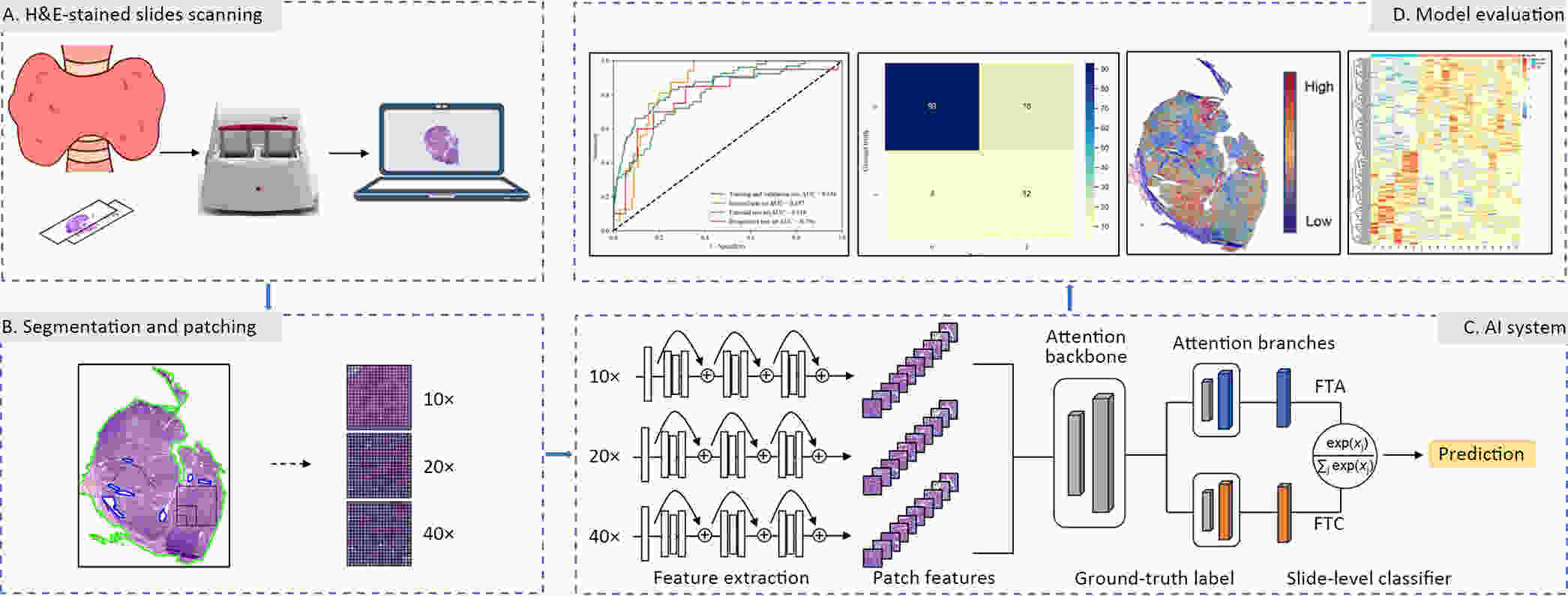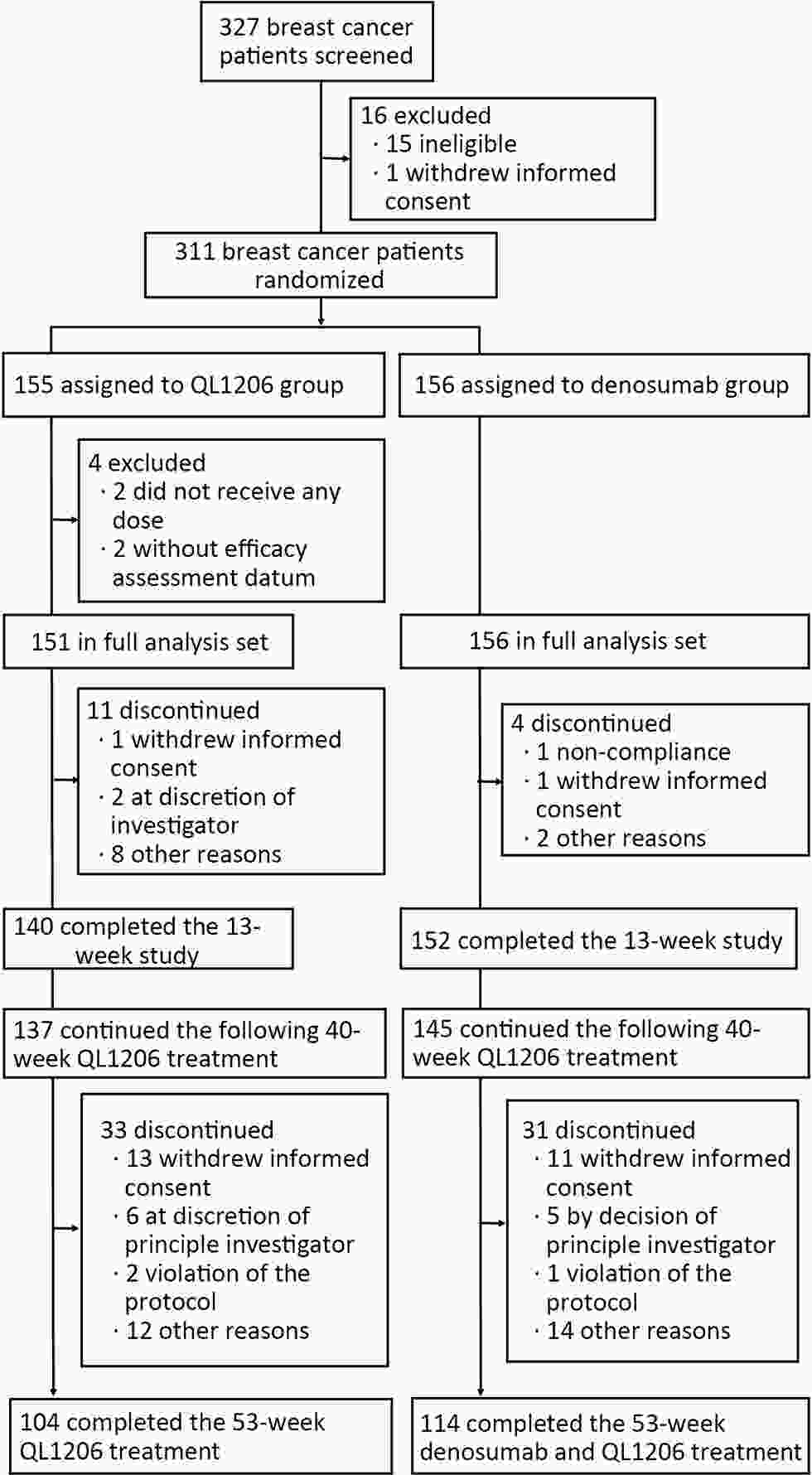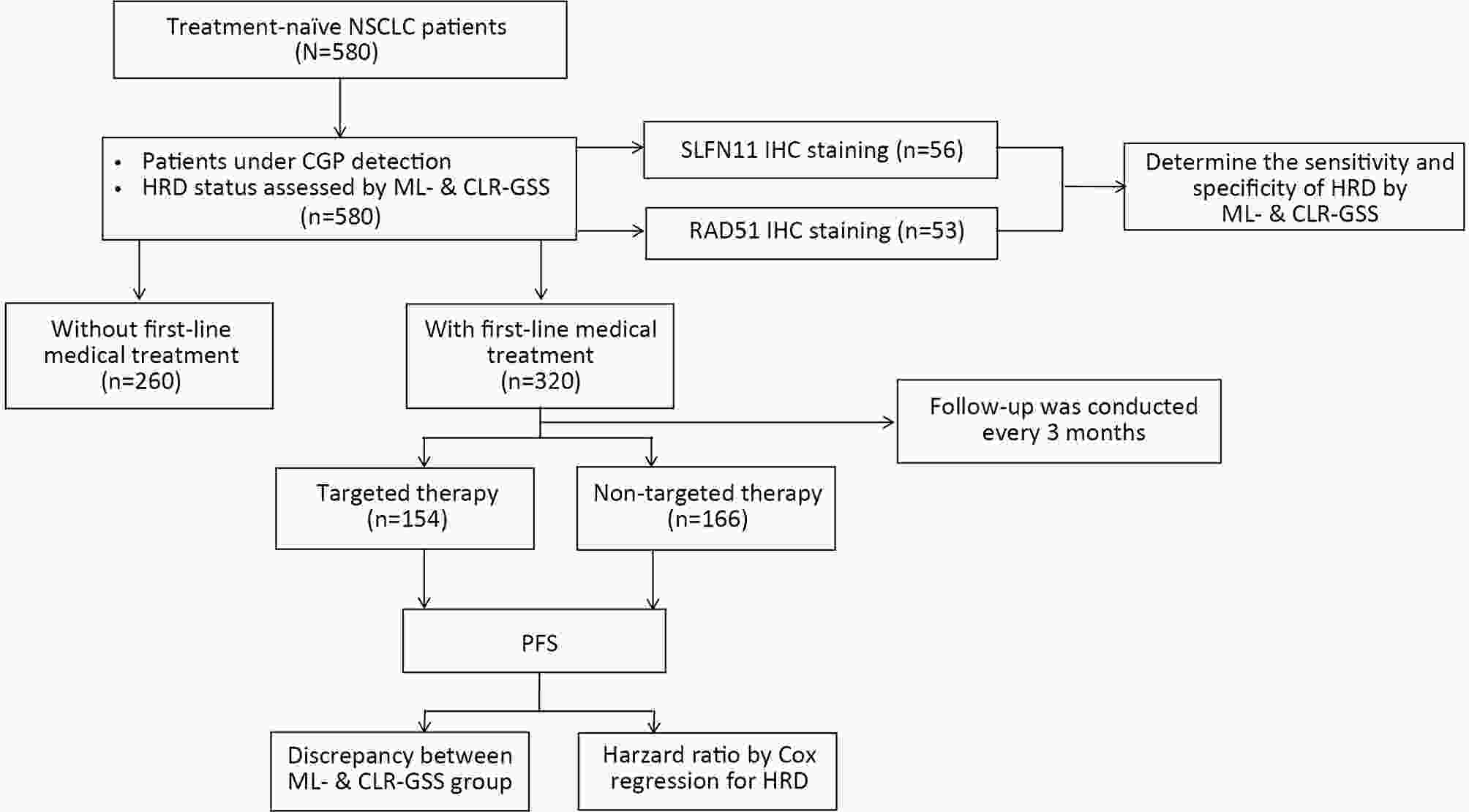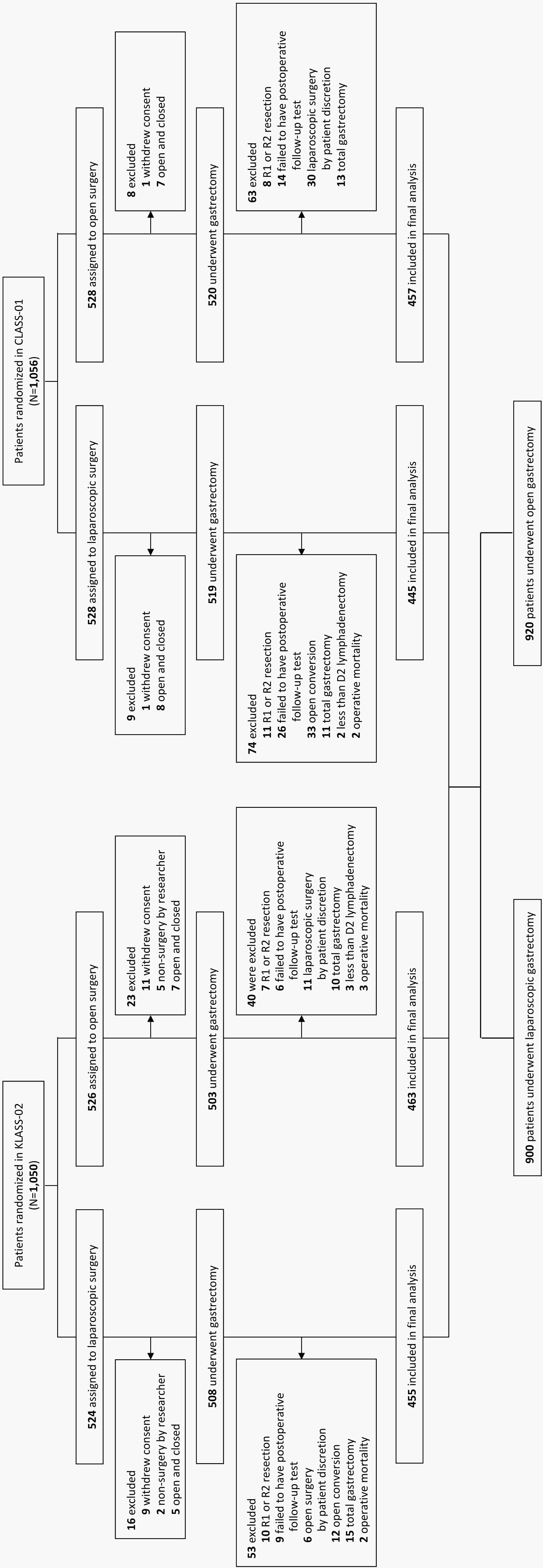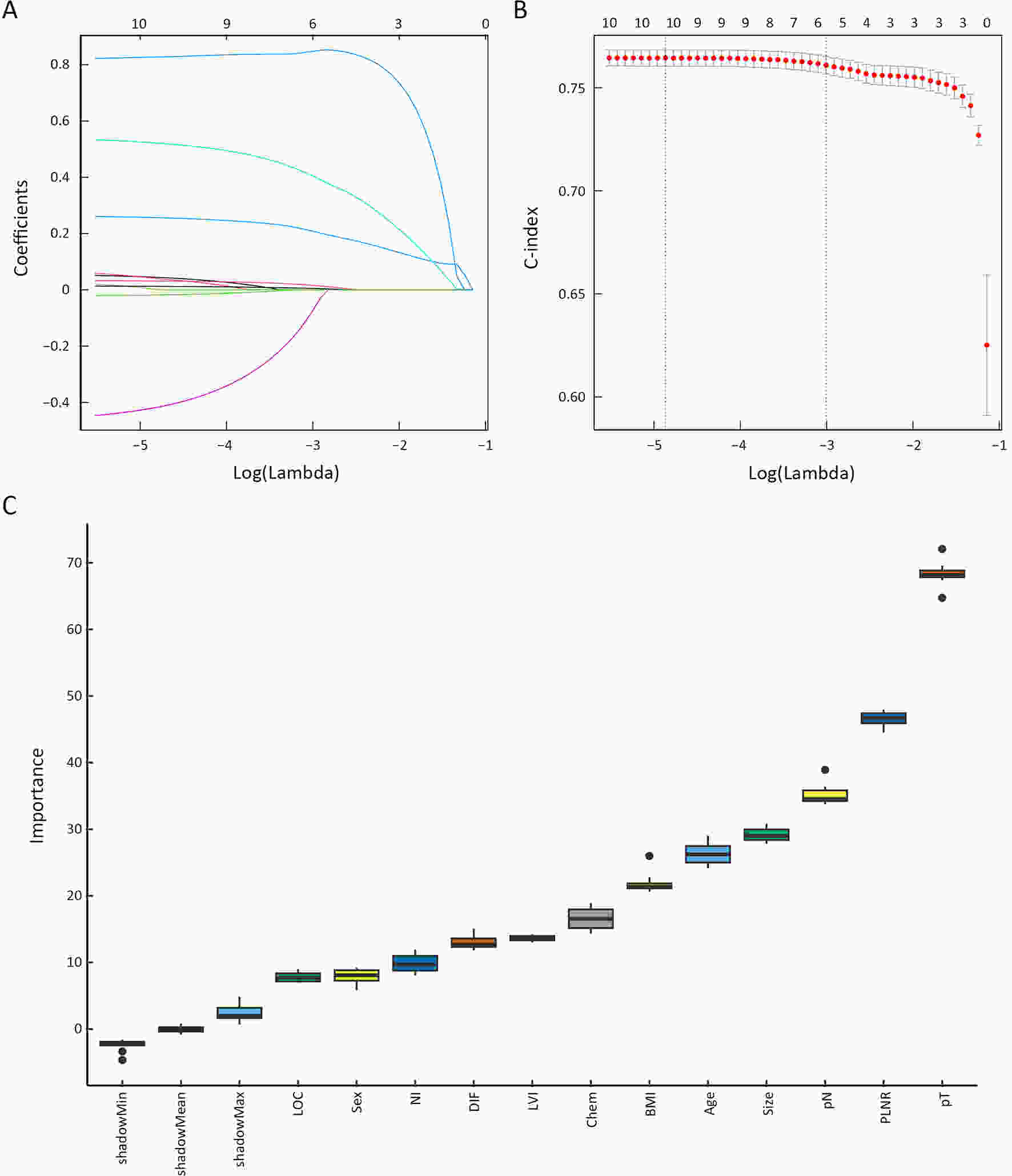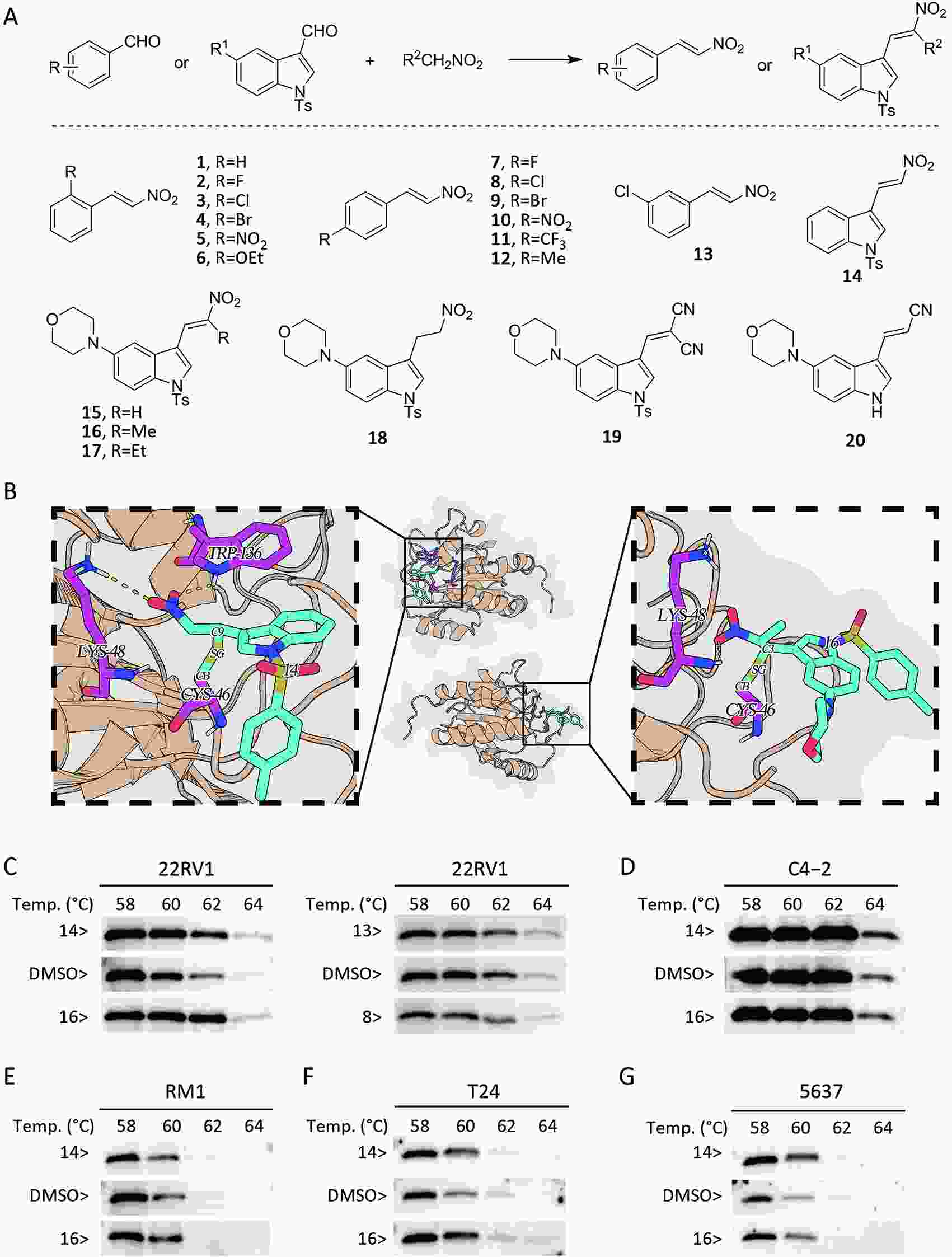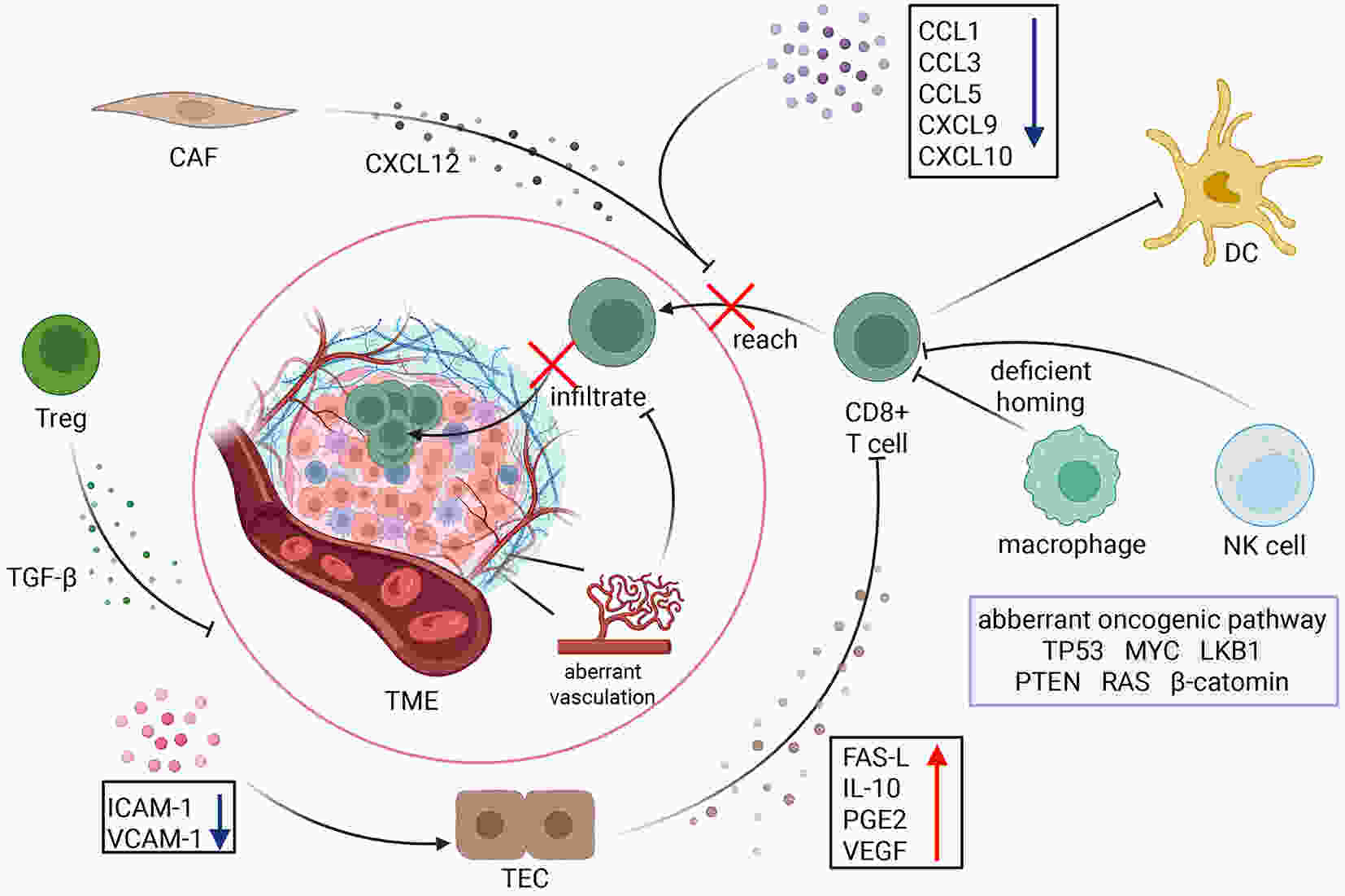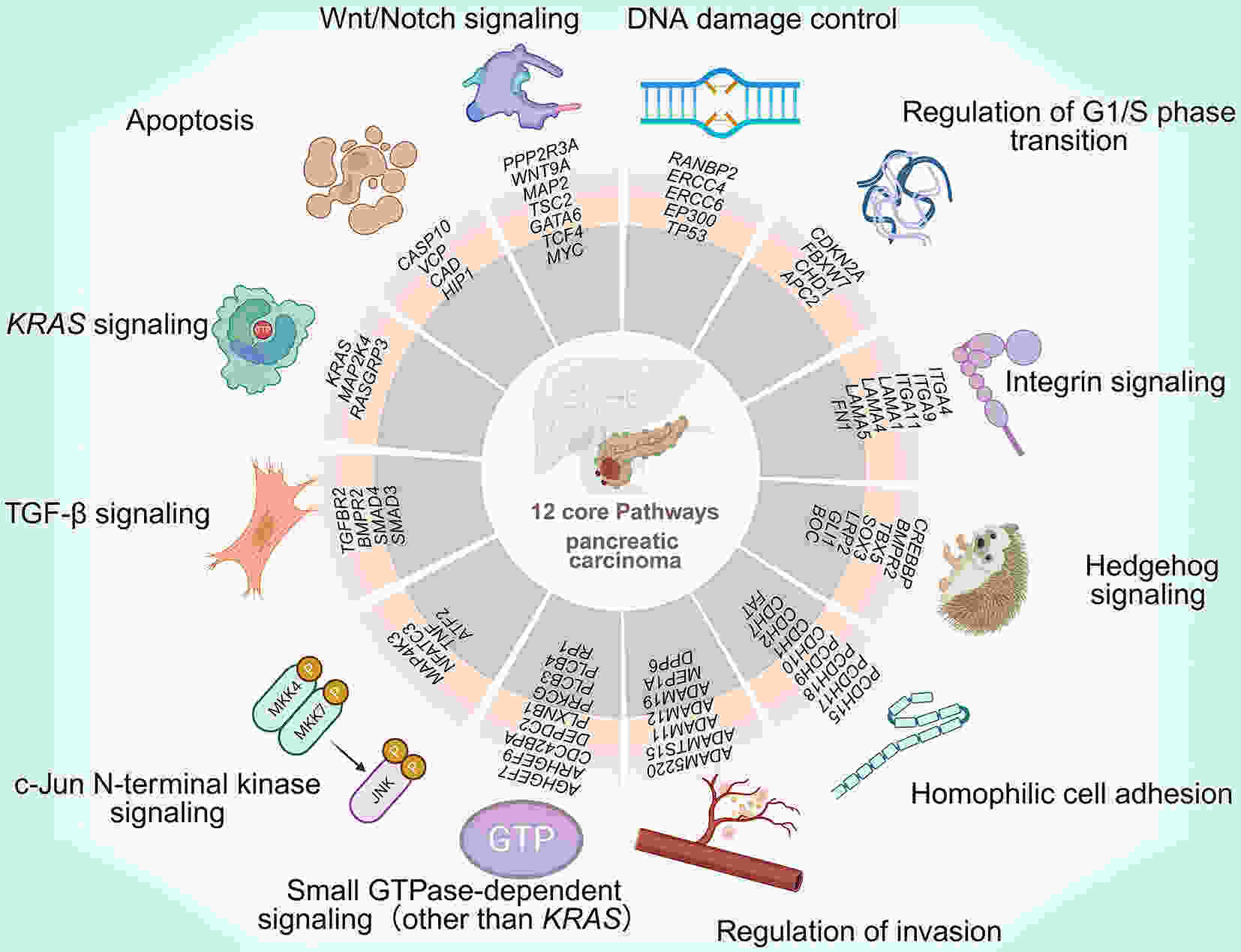Current Issue
Display Method: |
2025, 37(3): 297-302.
doi: 10.21147/j.issn.1000-9604.2025.03.01
Abstract:
2025, 37(3): 303-315.
doi: 10.21147/j.issn.1000-9604.2025.03.02
Abstract:
ObjectiveThis study aims to develop a deep multiscale image learning system (DMILS) to differentiate malignant from benign thyroid follicular neoplasms on multiscale whole-slide images (WSIs) of intraoperative frozen pathological images. MethodsA total of 1,213 patients were divided into training and validation sets, an internal test set, a pooled external test set, and a pooled prospective test set at three centers. DMILS was constructed using a deep learning-based weakly supervised method based on multiscale WSIs at 10×, 20×, and 40× magnifications. The performance of the DMILS was compared with that of a single magnification and validated in two pathologist-unidentified subsets. ResultsThe DMILS yielded good performance, with areas under the receiver operating characteristic curves (AUCs) of 0.848, 0.857, 0.810, and 0.787 in the training and validation sets, internal test set, pooled external test set, and pooled prospective test set, respectively. The AUC of the DMILS was higher than that of a single magnification, with 0.788 of 10×, 0.824 of 20×, and 0.775 of 40× in the internal test set. Moreover, DMILS yielded satisfactory performance on the two pathologist-unidentified subsets. Furthermore, the most indicative region predicted by DMILS is the follicular epithelium. ConclusionsDMILS has good performance in differentiating thyroid follicular neoplasms on multiscale WSIs of intraoperative frozen pathological images.
2025, 37(3): 316-336.
doi: 10.21147/j.issn.1000-9604.2025.03.03
Abstract:
ObjectiveTriple-negative breast cancer (TNBC) is a highly aggressive subtype that lacks targeted therapies, leading to a poorer prognosis. However, some patients achieve long-term recurrence-free survival (RFS), offering valuable insights into tumor biology and potential treatment strategies. MethodsWe conducted a comprehensive multi-omics analysis of 132 patients with American Joint Committee on Cancer (AJCC) stage III TNBC, comprising 36 long-term survivors (RFS≥8 years), 62 moderate-term survivors (RFS: 3−8 years), and 34 short-term survivors (RFS<3 years). Analyses investigated clinicopathological factors, whole-exome sequencing, germline mutations, copy number alterations (CNAs), RNA sequences, and metabolomic profiles. ResultsLong-term survivors exhibited fewer metastatic regional lymph nodes, along with tumors showing reduced stromal fibrosis and lower Ki67 index. Molecularly, these tumors exhibited multiple alterations in genes related to homologous recombination repair, with higher frequencies of germline mutations and somatic CNAs. Additionally, tumors from long-term survivors demonstrated significant downregulation of the RTK-RAS signaling pathway. Metabolomic profiling revealed decreased levels of lipids and carbohydrate, particularly those involved in glycerophospholipid, fructose, and mannose metabolism, in long-term survival group. Multivariate Cox analysis identified fibrosis [hazard ratio (HR): 12.70, 95% confidence interval (95% CI): 2.19−73.54, P=0.005] and RAC1 copy number loss/deletion (HR: 0.22, 95% CI: 0.06−0.83, P=0.026) as independent predictors of RFS. Higher fructose/mannose metabolism was associated with worse overall survival (HR: 1.30, 95% CI: 1.01−1.68, P=0.045). Our findings emphasize the association between biological determinants and prolonged survival in patients with TNBC. ConclusionsOur study systematically identified the key molecular and metabolic features associated with prolonged survival in AJCC stage III TNBC, suggesting potential therapeutic targets to improve patient outcomes.
2025, 37(3): 337-351.
doi: 10.21147/j.issn.1000-9604.2025.03.04
Abstract:
ObjectiveTo evaluate the efficacy and safety of QL1206 (a denosumab biosimilar to Xgeva®) in breast cancer patients with bone metastasis (BM) through subgroup analysis of a randomized, double-blind phase III trial (No. NCT04550949). MethodsThis subgroup analysis included patients with BM from breast cancer enrolled in a phase III trial. Patients were randomized (1:1) to receive either three cycles of QL1206 or denosumab (120 mg subcutaneously every 4 weeks). Subsequently, they received 10 cycles of QL1206 (120 mg) over 40 weeks, followed by a 20-week safety follow-up. The primary endpoint was the percentage changes from baseline to week 13 in urinary N-telopeptide corrected for creatinine (uNTx/Cr). ResultsThe breast cancer cohort consisted of 311 patients. Vertebral involvement (66.4%) was the most prevalent BM site at enrollment, while 27.7% of patients presented with ≥3 metastatic bone lesions. At week 13, QL1206 demonstrated a median uNTx/Cr reduction of −69.9% (range: −98.1%−568.0%) vs. −74.3% (range: −97.7%−386.3%) for denosumab. The analysis of covariance revealed comparable least-square means for log-transformed changes: −1.416 [95% confidence interval (95% CI): −1.736 to −1.096] vs. −1.501 (95% CI: −1.824 to −1.178), yielding an between-group difference of 0.085 (90% CI: −0.062−0.232; P=0.343). After a 53-week treatment period, 83.6% achieved bone density improvement/disease stabilization. Safety profiles were comparable between groups. ConclusionsQL1206 demonstrated similar efficacy and safety to the reference denosumab in patients with BM from breast cancer, supporting QL1206 as a new option for management of BM from breast cancer.
2025, 37(3): 352-364.
doi: 10.21147/j.issn.1000-9604.2025.03.05
Abstract:
ObjectivePatients with homologous recombination deficiency (HRD) demonstrate distinct clinicopathological and prognostic features. However, standardised and clinically validated HRD detection methodologies specifically tailored for non-small cell lung cancer (NSCLC) have yet to be established. Further research is needed to clarify the precise role and clinical implications of HRD in NSCLC. MethodsA cohort of 580 treatment-naïve NSCLC patients was retrospectively enrolled. Comprehensive genomic profiling (CGP) was performed for all patients, and HRD status was evaluated using two genomic scar score (GSS)-based algorithms: a machine learning-based GSS (ML-GSS) and a continuous linear regression-based GSS (CLR-GSS). To assess the diagnostic performance (sensitivity and specificity) of the ML-GSS and CLR-GSS algorithms for HRD detection, immunohistochemical (IHC) staining was conducted for two HRD-related biomarkers: Schlafen 11 (SLFN11) and RAD51. Survival analysis, including progression-free survival (PFS), along with multivariable Cox proportional hazards models, was performed to compare the prognostic value of the two HRD algorithms. ResultsAmong all patients, 146 (25.2%) and 46 (7.9%) were classified as HRD-positive (HRD+) by ML-GSS and CLR-GSS, respectively. Using SLFN11 IHC expression as the reference standard, comparative analysis demonstrated that ML-GSS exhibited significantly higher sensitivity but lower specificity than CLR-GSS. This trend was consistently observed in RAD51 staining analysis. Compared to HRD-negative (HRD−) patients, ML-GSS-defined HRD+ cases displayed distinct clinicopathological and genomic features, including a higher prevalence of homologous recombination (HR)-related genes mutations, BRCA1/2 mutations, TP53 mutations, elevated tumor mutation burden (TMB), and increased copy number variations (CNVs). In contrast, CLR-GSS-defined HRD+ patients were only enriched for BRCA1/2 mutations, TP53 mutations, and elevated TMB. Furthermore, ML-GSS-defined HRD+ status was associated with significantly worse prognosis following first-line therapy compared to HRD− patients. Univariate and multivariable Cox analyses identified ML-GSS-defined HRD+ and TP53 mutations as significant predictors and independent risk factors, respectively. No such associations were observed in the CLR-GSS-defined HRD+ cohort. ConclusionsML-GSS demonstrated superior performance to CLR-GSS in assessing chromosomal instability (CIN) and showed greater clinical utility. We recommend the ML-GSS algorithm as a robust and clinically validated tool for HRD/CIN evaluation in NSCLC. Furthermore, ML-GSS-defined HRD+ status was identified as both a significant predictor and an independent risk factor.
2025, 37(3): 365-376.
doi: 10.21147/j.issn.1000-9604.2025.03.06
Abstract:
ObjectiveLaparoscopic distal gastrectomy (LDG) has potential as a surgical treatment option for locally advanced gastric cancer (LAGC). However, there is uncertainty regarding the generalizability of LDG efficacy across diverse patient populations and treatment settings. This study aimed to assess the outcomes of LDG vs. open distal gastrectomy (ODG) in patients with LAGC despite differences in clinical trial populations and treatment environments. MethodsThe KLASS-02 and CLASS-01 trials are multicenter, non-inferiority, open-label, randomized controlled trials for patients with LAGC eligible for distal subtotal gastrectomy in Korea and China, respectively. Some 1,050 patients were enrolled in KLASS-02, and 1,056 patients were enrolled in CLASS-01. Individual patient data (IPD) from KLASS-02 and CLASS-01 were pooled and analyzed. ResultsThere were 900 patients in the LDG group and 920 in the ODG group. Baseline characteristics were well balanced between groups. The LDG group had better short-term and recovery outcomes than the ODG group, although anastomotic leakage was more frequent. For patients who underwent LDG vs. ODG, 5-year overall survival (OS) was 82.7% [95% confidence interval (95% CI), 80.2%−85.2%] vs. 83.3% (95% CI, 80.9%−85.8%) (P=0.706) and 5-year recurrence-free survival (RFS) was 76.9% (95% CI, 74.1%−79.7%) vs. 77.9% (95% CI, 75.2%−80.6%) (P=0.666), respectively, with a median follow-up of 70 months. In the multivariable prognostic IPD meta-analysis, the operative approach was not independently associated with OS [hazard ratio (HR)=1.045, 95% CI, 0.833−1.311; P=0.706] or RFS (HR=1.044, 95% CI, 0.859−1.269; P=0.667) for LDG vs. ODG. In the subgroup analysis, LDG demonstrated a significant association with poorer RFS in the pT4 subgroup (HR=1.377, 95% CI, 1.022−1.760; P=0.034). ConclusionsDespite differences in patient populations, surgical practices, and postoperative treatments between trials, LDG is oncologically safe with the benefit of being minimally invasive for patients with LAGC, except for the pT4 patients. Therefore, LDG could be a good treatment alternative for patients with LAGC; however, caution should be warranted in its application for patients classified as T4.
2025, 37(3): 377-389.
doi: 10.21147/j.issn.1000-9604.2025.03.07
Abstract:
ObjectiveThe previously integrated tumor-inflammation-nutrition (HI-GC) score has demonstrated dynamic monitoring value for recurrence and clinical decision-making in patients with postsurgical gastric cancer (GC). However, its failure to incorporate clinical-pathological factors limits its capacity for baseline risk assessment. This study aimed to develop a model that accurately identifies patients for adjuvant chemotherapy and dynamically evaluates recurrence risk. MethodsThis retrospective, multicenter, longitudinal cohort study, spanning nine hospitals, included 7,085 patients with GC post-radical gastrectomy. A baseline prognostic model was constructed using 117 machine-learning algorithms. The dynamic survival decision tree model (dySDT) was employed to combine the baseline model with the HI-GC score. ResultsA Cox regression model incorporating six factors was used to create a nomogram [Harrell’s C-index: training cohort: 0.765; 95% confidence interval (95% CI): 0.747, 0.783; validation set: 0.810; 95% CI: 0.747, 0.783], including pT stage, positive lymph node ratio, pN stage, tumor size, age, and adjuvant chemotherapy. The best-performing machine learning model exhibited similar predictive accuracy to the nomogram (C-index: 0.770). For the short-term dySDT at 1 month, the mortality hazard ratios (HRs) for groups IIa, IIb, and III were 2.61 (95% CI: 2.24, 3.04), 5.02 (95% CI: 4.15, 6.06), and 8.88 (95% CI: 7.57, 10.42), respectively, compared to group I. Stratified analysis revealed a significant interaction between adjuvant chemotherapy and overall survival in each subgroup (P<0.001). The long-term dySDT at 1 year showed HRs of 3.25 (95% CI: 2.12, 4.97) for group II, 6.73 (95% CI: 4.29, 10.56) for group IIIa, and 17.88 (95% CI: 10.71, 29.84) for group IIIb. ConclusionsThe dySDT effectively stratifies mortality risk and provides valuable assistance in clinical decision-making after gastrectomy.
2025, 37(3): 390-403.
doi: 10.21147/j.issn.1000-9604.2025.03.08
Abstract:
ObjectiveThis study aims to quantify the potential impact of controlling major risk factors on liver cancer deaths in China from 2021 to 2050 under various intervention scenarios. MethodsWe developed a macro-level simulation model based on comparative risk assessment to estimate population attributable fractions and avoidable liver cancer deaths. Risk factor prevalence data were obtained from national surveys and epidemiological estimates. Three intervention scenarios for each risk factor were projected: elimination (Scenario 1), ambitious reduction (Scenario 2), and manageable targets aligned with national/global goals (Scenario 3). The impact of secondary prevention through liver cancer screening at different coverage was evaluated. ResultsBetween 2021 and 2050, liver cancer deaths in China are projected to reach 9.44 million in males and 4.29 million in females. Eliminating hepatitis B virus and hepatitis C virus could prevent 65.62% (57.47%−73.77%) and 28.47% (24.93%−32.00%) of liver cancer deaths, respectively. Achieving manageable targets in reducing the prevalence of smoking and alcohol drinking could prevent 6.57% (5.75%−7.38%) and 0.85% (0.75%−0.96%) of liver cancer deaths, with a more pronounced effect observed in males. Eliminating high body mass index (BMI) could avert 45,000 male and 25,000 female deaths annually by 2050, while diabetes elimination could prevent 60,000 male and 21,000 female deaths. Secondary prevention through liver cancer screening with 80% coverage could reduce liver cancer deaths by 3.59% (3.14%−4.04%) for the total population. Combining all interventions under Scenario 1 could prevent up to 88.39% (76.65%−99.81%) of male and 77.80% (67.42%−87.88%) of female liver cancer deaths by 2050. ConclusionsComprehensive risk factor control could prevent over 80% of liver cancer deaths in China by 2050. Secondary prevention through screening may offer modest additional benefits. These findings provide strong quantitative support for targeted, evidence-based interventions and underscore the need for policy action to address key risk factors.
2025, 37(3): 404-416.
doi: 10.21147/j.issn.1000-9604.2025.03.09
Abstract:
ObjectiveFerroptosis represents a form of cell death characterized by the accumulation of iron dependent lipid peroxidation. This process culminates in membrane damage and cell lysis. One pivotal surveillance mechanism is induced by glutathione peroxidase 4 (GPX4). Furthermore, inhibition of GPX4 has been reported to hold a promise effect in cancer therapeutics. MethodsComputer-aided docking and small molecule probe were used for designed compounds. Flow cytometry was used to evaluate the ferroptosis. Animal experiments were taken to evaluate the in vivo effect of two compounds. ResultsBased on our prior research, a series of twenty compounds with covalent binding potential was designed and synthesized. Under systematic evaluation, our team identified two small molecules 14 and 16, which significantly stabilized GPX4 thermal denaturation. Further investigations revealed that treatment with compounds 14 and 16 led to an increase in lipid peroxidation, oxidative stress, and other markers (C11, Fe2+ and ROS) levels also increased. In both in vivo and in vitro experiment, compounds 14 and 16 are found suppression effect on urological cancer cells. ConclusionsCompounds 14 and 16 deserve further works as lead compounds of novel docking models for finally discovering effective anti-tumor drug. Future research is needed to dissect their mechanism and exploits this scaffold for GPX4 inhibitor development.
2025, 37(3): 417-431.
doi: 10.21147/j.issn.1000-9604.2025.03.10
Abstract:
ObjectiveAdverse-risk acute myeloid leukemia (AML) patients should receive allogeneic hematopoietic stem cell transplantation (allo-HSCT) at first complete remission (CR1). However, the influence of prior therapies [i.e., venetoclax plus azacitidine (VEN-AZA) or intensive chemotherapy (IC)] on post-transplant outcomes remains inconclusive. This multicenter, retrospective study compared the post-transplant outcomes between patients receiving VEN-AZA and those receiving IC before allo-HSCT. MethodsThis study was based on the transplant database of TROPHY group. Consecutive adverse-risk AML patients receiving allo-HSCT from January 2021 to June 2023 were screened in five Chinese transplant centers. Patients were categorized into VEN-AZA group if they received venetoclax combined with azacitidine as first-line therapy followed by allo-HSCT. Patients who received first-line therapy consisting of a mainstay treatment of cytarabine and anthracycline followed by allo-HSCT were categorized into IC group. ResultsIn the total cohort, the 3-year probabilities of overall survival, leukemia-free survival, and event-free survival were better in the IC group than VEN-AZA group, particularly for patients with ASXL1 mutations or SF3B1 mutations. However, the survival of the VEN-AZA group was not superior to that of IC group in patients aged ≥55 years or those with the hematopoietic cell transplantation-comorbidity index scores ≥1 before allo-HSCT. After propensity score matching (median age: VEN-AZA group: 57 years; IC group: 55 years), only the probability of overall survival for the IC group was better than that of VEN-AZA group (93.6% vs. 78.0%, P=0.034) at the 1-year follow-up; however, all of the other clinical outcomes were comparable between the VEN-AZA and IC groups. The TP53 mutation was independently associated with post-transplant relapse and survival. ConclusionsOur results suggest that IC remains the cornerstone of therapy, whereas VEN-AZA may also be used in younger patients and medically fit patients with adverse-risk AML who are receiving allo-HSCT in CR1.
2025, 37(3): 432-445.
doi: 10.21147/j.issn.1000-9604.2025.03.11
Abstract:
Drug resistance continues to be the principal limiting factor in achieving a cure for patients with cancer, significantly hindering the long-term efficacy of novel cancer drugs. Accumulating evidence has shown that metabolites derived from tumor cells regulate immune cell metabolism via tumor microenvironment crosstalk. However, as immunometabolic research has deepened, the leading role played by the intrinsic metabolic regulation of immune cells in the drug resistance of tumor cells has been discovered. Immune metabolites have been shown to cause immune resistance, target therapy resistance, and chemotherapy resistance, and drugs that target immune metabolism have great potential. To date, researchers have not fully explored the impact of immune-derived metabolites on tumor cells and their influence on the responsiveness to cancer drugs. In this review, we focus on the lactate, fatty acid, glucose, and nucleotide metabolic alterations that take place in T cells and macrophages and how these changes can impair anti-tumor immunity, ultimately promoting tumor cell survival and decreasing responsiveness to the corresponding therapeutic approaches. We present the current developments in drugs targeting immunometabolic pathways and propose constructive suggestions, such as precise delivery to immune cell targets to enhance efficacy and safety, offering novel perspectives for cancer drug development.
Drug resistance continues to be the principal limiting factor in achieving a cure for patients with cancer, significantly hindering the long-term efficacy of novel cancer drugs. Accumulating evidence has shown that metabolites derived from tumor cells regulate immune cell metabolism via tumor microenvironment crosstalk. However, as immunometabolic research has deepened, the leading role played by the intrinsic metabolic regulation of immune cells in the drug resistance of tumor cells has been discovered. Immune metabolites have been shown to cause immune resistance, target therapy resistance, and chemotherapy resistance, and drugs that target immune metabolism have great potential. To date, researchers have not fully explored the impact of immune-derived metabolites on tumor cells and their influence on the responsiveness to cancer drugs. In this review, we focus on the lactate, fatty acid, glucose, and nucleotide metabolic alterations that take place in T cells and macrophages and how these changes can impair anti-tumor immunity, ultimately promoting tumor cell survival and decreasing responsiveness to the corresponding therapeutic approaches. We present the current developments in drugs targeting immunometabolic pathways and propose constructive suggestions, such as precise delivery to immune cell targets to enhance efficacy and safety, offering novel perspectives for cancer drug development.
2025, 37(3): 446-465.
doi: 10.21147/j.issn.1000-9604.2025.03.12
Abstract:
In the past decade, immunotherapies targeting cytotoxic T-lymphocyte antigen-4 (CTLA-4), programmed cell death 1 (PD-1), and PD-1 ligand (PD-L1) have been approved for solid tumors. However, some patients demonstrate suboptimal clinical outcomes due to resistance. The tumor microenvironment (TME) significantly affects the efficiency of immunotherapy by mediating interactions between tumor and non-tumor cells, including dendritic cells, T cells, B cells, macrophages, neutrophils, NK cells, and myeloid-derived suppressor cells (MDSCs). These non-tumor cells often exhibit two phenotypes with altered functions, and tumor cells drives their transition towards tumor promotion through tumor-education. Tumor-educated cells (TECs) are cells influenced by tumor cells, which acquire immune-suppressive phenotypes and promote tumor progression through resistance to anti-cancer therapies. These cells undergo modifications in response to signals from the tumor, which can influence their roles in tumor progression. Their dynamic interactions with tumor cells contribute to the reshaping of the TME, facilitating cancer growth and immune modulation. This review summarizes research on TECs in TME, explores mechanisms related to tumor education, and discusses their role in tumor progression and immunotherapy resistance. Additionally, potential therapeutic approaches targeting these cells are also reviewed, which may complement current treatment strategies.
In the past decade, immunotherapies targeting cytotoxic T-lymphocyte antigen-4 (CTLA-4), programmed cell death 1 (PD-1), and PD-1 ligand (PD-L1) have been approved for solid tumors. However, some patients demonstrate suboptimal clinical outcomes due to resistance. The tumor microenvironment (TME) significantly affects the efficiency of immunotherapy by mediating interactions between tumor and non-tumor cells, including dendritic cells, T cells, B cells, macrophages, neutrophils, NK cells, and myeloid-derived suppressor cells (MDSCs). These non-tumor cells often exhibit two phenotypes with altered functions, and tumor cells drives their transition towards tumor promotion through tumor-education. Tumor-educated cells (TECs) are cells influenced by tumor cells, which acquire immune-suppressive phenotypes and promote tumor progression through resistance to anti-cancer therapies. These cells undergo modifications in response to signals from the tumor, which can influence their roles in tumor progression. Their dynamic interactions with tumor cells contribute to the reshaping of the TME, facilitating cancer growth and immune modulation. This review summarizes research on TECs in TME, explores mechanisms related to tumor education, and discusses their role in tumor progression and immunotherapy resistance. Additionally, potential therapeutic approaches targeting these cells are also reviewed, which may complement current treatment strategies.
2025, 37(3): 466-486.
doi: 10.21147/j.issn.1000-9604.2025.03.13
Abstract:
Pancreatic cancer, particularly pancreatic ductal adenocarcinoma (PDAC), is one of the most lethal malignancies, which is characterized by a complex tumor microenvironment (TME) that fosters immune evasion and treatment resistance. Recent genomic advancements have unveiled diverse molecular subtypes of PDAC, providing insights into targeted therapies and precision medicine. This review synthesizes the current understanding of PDAC’s molecular characterization and immunosuppressive TME, as well as emerging therapeutic strategies, including innovative approaches targeting key molecular pathways such as kirsten rat sarcoma viral oncogene homolog (KRAS), epidermal growth factor receptor (EGFR), and immune checkpoints. Despite advances, challenges remain in overcoming treatment resistance and inherent heterogeneity of pancreatic cancer subtypes. We highlight the need for multidisciplinary collaboration to enhance early diagnosis and develop individualized therapeutic protocols, paving the way for improving the outcomes of this aggressive cancer. This integrated perspective underscores the urgency of transforming the innovative research into pancreatic cancer management.
Pancreatic cancer, particularly pancreatic ductal adenocarcinoma (PDAC), is one of the most lethal malignancies, which is characterized by a complex tumor microenvironment (TME) that fosters immune evasion and treatment resistance. Recent genomic advancements have unveiled diverse molecular subtypes of PDAC, providing insights into targeted therapies and precision medicine. This review synthesizes the current understanding of PDAC’s molecular characterization and immunosuppressive TME, as well as emerging therapeutic strategies, including innovative approaches targeting key molecular pathways such as kirsten rat sarcoma viral oncogene homolog (KRAS), epidermal growth factor receptor (EGFR), and immune checkpoints. Despite advances, challenges remain in overcoming treatment resistance and inherent heterogeneity of pancreatic cancer subtypes. We highlight the need for multidisciplinary collaboration to enhance early diagnosis and develop individualized therapeutic protocols, paving the way for improving the outcomes of this aggressive cancer. This integrated perspective underscores the urgency of transforming the innovative research into pancreatic cancer management.


 Abstract
Abstract FullText HTML
FullText HTML PDF 866KB
PDF 866KB